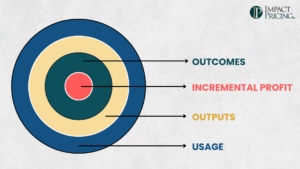Price increases in subscription businesses can be extremely profitable. However, it’s possible to go too far, too fast. Just ask Netflix.
In the past year, Google raised my G-suite price, Intuit raised my QuickBooks online price, and Netflix raised my price (and I canceled). Now Hulu just announced a price increase… which might be a mistake on their part.
If you raise prices on your current customers, you will cause them to rethink their decision.
I thought about canceling G-Suite and QuickBooks, but the switching costs are too high. (Don’t tell them please. They will raise my price some more.) I did cancel Netflix this year. Whenever you raise the price on your current customers, they will pause for at least a moment and ask, “is this still worth it?” Hopefully it’s because you’ve had plenty of time to prove your value. But sometimes it isn’t.
Let’s talk about a few nuances of raising prices if you’re a subscription business.
3 Tips When Raising Your Subscription Prices
Here are a few helpful tips to keep in mind if you’re considering raising your prices.
1. You can raise prices on future subscribers and they never knew you raised prices.
If you grandfather in your current subscribers, you will maintain or even reduce churn.
2. If you want to raise prices on your current customers, you don’t have to raise the prices on ALL of your customers.
Pick and choose which ones get price increases.
If you have a customer success department, or if you’re closely watching usage, raise the prices on the subscribers who use your product a lot. Don’t raise prices on those that barely use it. If you raise price on a subscriber that doesn’t use your product much, it is very likely they will churn.
I’ve heard it said that 80% of people who join health clubs don’t go after January 31. Imagine you are one of these 80%. In July, you get a notice that your gym membership price is going up $10 per month. You probably think, “I haven’t been since January. I should go ahead and cancel.” However, if they hadn’t sent you that notice, you would have just paid the bill.
One technique could be to rank order your customers based on usage. Then, raise prices on the top 20% based on usage. Watch your churn rates. Then move to the next 20%. Then the next. You will find the point where the increase in churn is not worth the additional revenue of the price increase.
3. Be as nice as possible to your subscribers.
Instead of just raising their price, try something like what Netflix did on their second and much more successful price increase. They sent out a notice to their subscribers that they were increasing prices, but because you were such a good customer, they would hold their current prices for you for a year. After the year, they reminded you of what they did and then raised the price.
Adding Value is the Key to Customer Loyalty
As a subscription business, you should be focused on making sure users actually use your product.
You need to keep adding value so they keep paying you. This often means you have added so much value that they now get way more than they pay for. This gives you an opportunity to increase prices without losing too many subscribers. This is why subscription companies often raise their prices… successfully.
Although I blogged about this before, the reason I left Netflix on their last price increase wasn’t that I couldn’t afford another $1 per month. It was that after thinking about it, I realized I rarely watched Netflix. I spent more time watching Amazon Prime. It seemed logical to unsubscribe.
Is Hulu’s announced price increase a mistake? Only time will tell, but the timing is circumspect. Hulu raised their prices just as Disney + and Apple TV came out. Not only will Hulu subscribers now rethink their decision, they now have more options to choose from. If I were Hulu, I would have executed their price increase a couple months ago.
The key takeaway is that many of your subscribers are willing to pay you more, if you go about raising prices in a thoughtful way.
See if you can identify them and get more from them.















